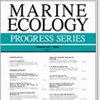环境和随机过程驱动硅藻分类和功能的时间贝塔多样性
IF 2.1
3区 环境科学与生态学
Q2 ECOLOGY
引用次数: 0
摘要
摘要:研究生物多样性的模式是生态研究的核心。过去几十年中,时间多样性(即群落组成随时间的变化)已成为一个前景广阔的研究领域。随着全球气候变化,了解环境变化对时间群落组成的影响变得越来越重要。我们对 9 个沿海硅藻群落进行了 12 次采样,每次采样间隔约 10 天,研究了时间 beta 多样性的模式和驱动因素,以及群落组成的时间变化是否与时间环境变化有关。我们采用分解为增益和减益的时间贝塔多样性指数(TBI)来量化分类学和功能群落相似性随时间的变化,并采用环境变量来确定当地非生物条件的时间变化。我们通过回归模型评估了时间性群落变化的环境和空间驱动因素,并通过基于距离的冗余分析根据采样日对群落组成的变化进行了划分。分类学 TBI 高于功能性 TBI,其特点是物种增减变化更剧烈。分类学 TBI 可通过地点位置来解释,而功能性 TBI 则与空间和环境变量有关。环境 TBI 仅与分类学 TBI 有明显关系。分类学或功能性 TBI 存在明显差异的地点与环境 TBI 存在明显差异的地点并不一致。群落的结构很可能是由环境变化和随机过程共同作用的结果,从而造成了 TBI 的不可预测性。我们的研究结果突显了环境的快速变化在动态沿岸群落中形成时间贝塔多样性的重要性。本文章由计算机程序翻译,如有差异,请以英文原文为准。
Environmental and stochastic processes drive diatom taxonomic and functional temporal beta diversity
ABSTRACT: Studying patterns of biodiversity is central to ecological research. Temporal beta diversity, i.e. the change in community composition over time, has emerged as a promising study field during the last decades. Following global climatic change, understanding the consequences of environmental alterations on temporal community composition has become increasingly important. We examined patterns and drivers of temporal beta diversity and whether the temporal variation in community composition is related to temporal environmental variation among 9 coastal diatom communities sampled 12 times at a ca. 10 d interval. We applied a temporal beta diversity index (TBI) decomposed into gains and losses to quantify changes in taxonomic and functional community similarity through time, and for environmental variables to determine temporal change in local abiotic conditions. We assessed environmental and spatial drivers of temporal community change by regression models and partitioned variation in the community composition according to sampling day by distance-based redundancy analyses. Taxonomic TBI was higher than functional TBI, characterized by sharper changes in species gains and losses. Taxonomic TBI was explained by site location, whereas functional TBI had a linkage with both spatial and environmental variables. Environmental TBI was significantly related to taxonomic TBI only. The sites significantly differing in taxonomic or functional TBI did not coincide with those with a significantly different environmental TBI between the sites. The communities were probably structured by both environmental variation and random stochastic processes, creating unpredictability in the TBI. Our results highlight the importance of rapid environmental alterations in shaping temporal beta diversity within dynamic coastal communities.
求助全文
通过发布文献求助,成功后即可免费获取论文全文。
去求助
来源期刊

Marine Ecology Progress Series
环境科学-海洋学
CiteScore
5.30
自引率
8.00%
发文量
238
审稿时长
3 months
期刊介绍:
The leading journal in its field, MEPS covers all aspects of marine ecology, fundamental and applied. Topics covered include microbiology, botany, zoology, ecosystem research, biological oceanography, ecological aspects of fisheries and aquaculture, pollution, environmental protection, conservation, and resource management.
 求助内容:
求助内容: 应助结果提醒方式:
应助结果提醒方式:


